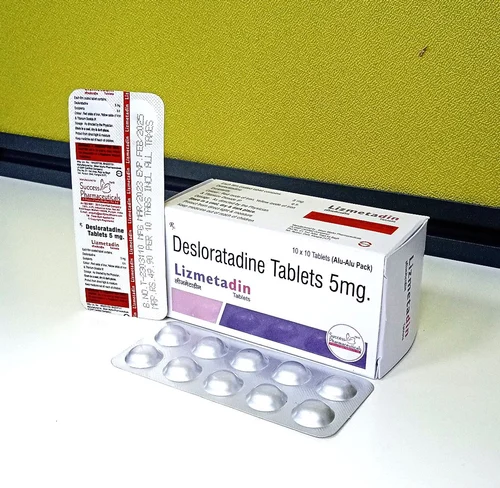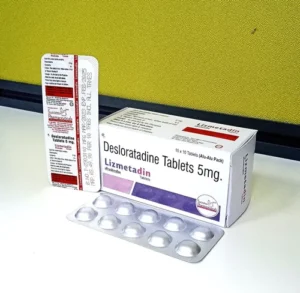
Desloratadine – Deslor 5mg Tablet
Desloratadine is a second-generation antihistamine used to treat allergies and hives. It is known for causing less drowsiness than older antihistamines and provides relief from symptoms like sneezing, itching, and watery eyes. This article explores the uses, side effects, risks, and how to take desloratadine, along with a comparison to loratadine.
Uses of Desloratadine
It is primarily used for:
- Seasonal Allergies: It relieves hay fever symptoms, such as a runny nose, sneezing, and itchy or watery eyes.
- Chronic Urticaria (Hives): It helps manage itching and swelling caused by chronic hives.
How to Take Deslor tablets?
It is available in tablet or syrup form. The mentioned dosage for adults and children over 12 years is:
- 5 mg once daily, with or without food.
- For children aged 6-11 years, the dose may be reduced to 2.5 mg once daily.
It’s essential to take it at the same time every day for the best results. Do not exceed the recommended dosage.
When to Take Desloratadine?
Desloratadine should be taken once a day, ideally in the morning or evening. Since it causes minimal sedation, it can be taken during the day without the risk of drowsiness. However, consistency in timing is key to maintaining effective symptom control.
Side Effects of Desloratadine
Most people tolerate it well, but it may cause side effects in some. Common side effects include:
- Headache
- Dry mouth
- Fatigue
- Mild drowsiness
Severe side effects are rare but can include:
- Swelling of the face, lips, or throat
- Severe dizziness
If you experience any of these symptoms, get instant medical attention.
Risks and Precautions
Deslor is generally safe, but there are certain precautions to consider:
- Kidney or Liver Issues: If you have kidney or liver problems, consult your doctor before using Deslor.
- Pregnancy and Breastfeeding: It’s recommended to use it during pregnancy or breastfeeding only if prescribed by a healthcare provider.
- Drug Interactions: Always inform your doctor of any other medications you’re taking to avoid adverse interactions.
Desloratadine vs Loratadine
Desloratadine is the active metabolite of loratadine, which means it’s what loratadine breaks down into after being processed by the liver. Here’s a quick comparison:
- Potency: Desloratadine is more potent and longer lasting than loratadine.
- Sedation: Both are less sedating than first-generation antihistamines, but desloratadine is less likely to cause drowsiness at higher doses.
- Onset: It may work faster than loratadine, providing quicker symptom relief.
Conclusion
Desloratadine is a highly effective antihistamine for managing allergies and hives. Its minimal sedative effects make it ideal for daytime use. Always follow the prescribed dosage and consult with your healthcare provider if you have any underlying health conditions or concerns.
